By Michael D. Hull
On September 28, 1939, the day after Warsaw fell to the German Army, American aviatrix Jacqueline Cochran sat down and wrote a letter to First Lady Eleanor Roosevelt. The record-setting, award-winning glamour girl of civil aviation suggested that America use women pilots in noncombat roles, thus freeing men for duty in the war that was almost certain to affect the United States sooner or later. Jackie stressed that the effective use of female fliers would require advance organization, and implied in the letter that she would be willing to devote her own time and efforts.
Mrs. Roosevelt thanked her and promised support, but both women realized that, with both aviation and the armed forces dominated by men, a decision to deploy female pilots would not be theirs to make.
Bold Appeal For Expanded Role Of Women In Military
As a prominent public figure, Jackie Cochran spoke out whenever she had the opportunity. On the day that Congress instituted the nation’s first peacetime draft, calling for the conscription of 800,000 men within a year, she addressed a meeting of the Ninety Nines, the women fliers’ organization, at the New York World’s Fair. “There should be an organized women’s air corps auxiliary to the other air forces in the government—controlled, supervised, and supported by our government,” she declared. Opportunity was not far off.
The war in Europe had put an end to record flying when Jackie, assuming the unofficial title of America’s leading aviatrix after the loss of Amelia Earhart in 1937, was at her peak. But the biggest challenge of her career was coming.
A Hardscrabble Southern Upbringing
Jackie Cochran’s life so far had reflected Horatio Alger overtones, those of rising from humble origins and achieving success through grit and hard work. She was born in Pensacola, Fla., in 1910, and her parents died when she was an infant. She lived with a poor foster family in the seedy mill towns and sawmill camps of northern Florida and southern Georgia. At the age of eight, she moved with them to Columbus, Ga., where cotton-mill jobs were plentiful. She went barefoot much of the time, her dresses were flour sacks, and her bed was usually a pallet on the floor.
She caught fish and crabs and discovered other ways of acquiring food, but she was always hungry. Jackie grew independent and made up her mind not to follow the shiftless ways of her foster parents. A friendly Catholic priest gave her advice, and a teacher taught her cleanliness and gave her a dress. The girl earned pennies babysitting, and once, when she was about eight, played midwife to an 18-year-old mother.
Jackie earned six cents an hour on 12-hour night shifts in a cotton mill and bought her first pair of high-heeled shoes. She worked hard, read, dreamed, and learned, despite her lack of education. After working in beauty parlors and saving several hundred dollars, she bought a Model T Ford and discovered that she had an aptitude for mechanical work. She ground valves and learned other engine maintenance and also made clothes, crocheted, and did needlework. She spent three years training in a local hospital. Her academic grades were poor, but Jackie excelled in nursing and wanted to help people. She assisted a country doctor in a northern Florida mill town.
Jackie Gets Her Wings
After working in the cosmetics field in Philadelphia, she headed for New York City. Not yet 20, and a brown-eyed, vivacious blonde with a forceful personality and a talent for organization, she was immediately hired at an exclusive Fifth Avenue beauty salon. Later, after finding beauty salons confining and unchallenging, Jackie went to a dinner party at a Miami club early in 1932 and met a man who would change her life. He was Floyd B. Odlum, a millionaire Wall Street lawyer and financier. He was intrigued by Jackie, who told him that she wanted to establish her own cosmetics business. He shrewdly sized up her prospects and suggested that she would make an ideal sales representative. He told her she would literally need wings to accomplish what she wanted.
Returning to New York, she pondered Odlum’s comment. Why not learn to fly? If she could pilot a plane, she could beat any other salesperson on the road. So, on a summer day in 1932, she drove out to Roosevelt Field on Long Island, where she spent her three-week vacation learning to fly. A bright student, she soloed after only three days. “When I paid for my first lesson,” she said, “a beauty operator ceased to exist and an aviator was born.” She gained her flying license before the three weeks were up.
After studying celestial navigation and learning Morse code, she resigned her salon job in the winter of 1932 and drove to California. She enrolled in the Ryan Flying School in San Diego, paid $1,200 for an old Travelair plane with a Gypsy motor, and earned limited commercial and transport flying licenses by the following year. She took a blind-flying course under the tutelage of Wesley Smith and became the first American woman to master it.
Entrepreneur, Wife And Philanthropist
Odlum was Jackie’s ardent supporter and suitor. With his help, Jackie established Jacqueline Cochran Cosmetics Inc., with a salon in Chicago and a lab in New Jersey. The business prospered. Jackie and Odlum were married on May 10, 1936, and they maintained homes in Palm Springs, Calif., Stamford, Conn., and Manhattan. But the orphan girl from Florida did not lose her concern for the less fortunate. Shortly after the wedding, she bought a building in New York and turned it into an orphanage.
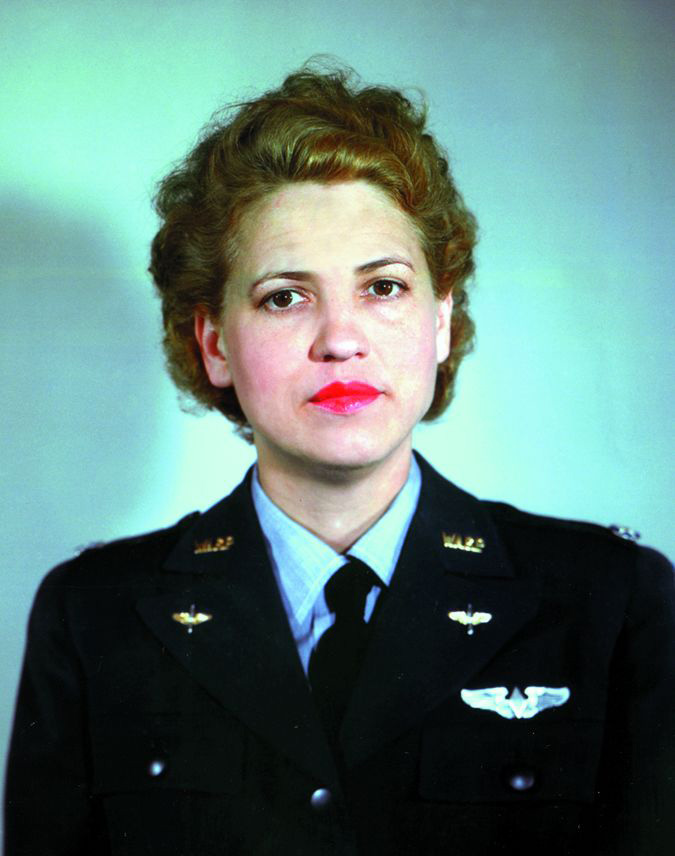
Meanwhile, Jackie had started flying in distance races in 1934, with Wesley Smith as her copilot. Her first three years were plagued by mishaps, due largely to flying planes of experimental design and construction. She persisted and began a steady series of successes that culminated in her victory over nine men in the prestigious 1938 Bendix Air Derby. She flew from Los Angeles to Cleveland in an AP-7, the civil version of Alexander P. de Seversky’s P-35 fighter plane, forerunner of the famed Republic P-47 Thunderbolt. Four years in a row (1937-1940), she won the equally coveted Harmon Trophy as the year’s best female flier.
Recognition From Eleanor Roosevelt
Jackie received a gold medal from Mrs. Roosevelt for her accomplishments, was named one of the 10 outstanding women of 1938 by American Woman magazine, and was honored by New York Mayor Fiorello La Guardia. She set national and international speed, distance, and altitude records, and in August 1939 became the first woman to make a landing entirely by instrument. By 1940, she had set 17 records.
On March 11, 1941, Congress passed the Lend-Lease Act to funnel needed war materiel to Great Britain, which stood alone after the Germans had occupied most of Western Europe. Among the first weapons to be shipped to Britain was a fleet of twin-engine, Lockheed Hudson medium bombers to be used by the RAF for coastal defense and Atlantic convoy protection. American manufacturers would route the planes to Canada, where it was the responsibility of the British Air Transport Auxiliary to fly or ship them to Britain, but the ATA was experiencing an acute shortage of pilots.
While British women pilots were already ferrying aircraft to and from bases in Britain, the ATA desperately needed qualified pilot recruits from neutral countries. There was also a problem in finding fliers willing to make the hazardous Atlantic crossing.
“What Can I Do To Help?”
Late in March 1941, Jackie Cochran attended an aviation awards ceremony at the White House and later lunched with General Henry H. “Hap” Arnold, chief of the Army Air Corps, and Clayton Knight, who was directing American recruiting efforts on behalf of the ATA. When discussion turned to the problem of the Hudson bombers, Jackie asked the two men, “What can I do to help?” Arnold responded, “Why don’t you do some of the ferrying? They need pilots, and as a woman flying bombers you can publicize that need.” Knight was delighted, and Jackie was thrilled. She could prove to skeptics in the military establishment that female fliers had a role to play in the war—and a vital one.
When Jackie contacted the ATA headquarters in Montreal, she received a lukewarm response. The British ferrying officials were doubtful about the ability of a woman, even one as celebrated as Jacqueline Cochran, to fly a bomber across the Atlantic. For several weeks, she heard nothing from Canada.
Jackie was anxious to get started on helping the war effort, so she decided to enlist her aviation contacts to put pressure on the ATA. Going over the heads of the British ferrying officials, she wrote to an old friend of hers and her husband’s, Lord Beaverbrook, the Canadian publisher and Prime Minister Winston Churchill’s puckish, forceful minister of supply and procurement. He invited Jackie to Montreal that June for a flight test.
Cleared For Flight Duty
During three days, America’s first lady of the air completed 60 takeoffs and landings, 10 of which were blind from the rear seat of a Harvard trainer. She was cleared for transatlantic flight, and ATA headquarters assigned her a co-pilot/navigator and radio operator to ferry a Hudson bomber from Montreal to Prestwick, Scotland. Jackie was elated, but the male pilots of the ATA were furious. They called a mass meeting and threatened to strike. Assigning a woman to do a man’s job was questioning their competence, they said, and if she should be shot down, then the ATA would be held responsible for the loss of America’s top aviatrix. The ATA compromised. Jackie would act as pilot in command across the ocean, but the copilot would take off and land the plane.
On June 17, 1941, Jackie walked out onto the tarmac at Montreal with her copilot, Captain Grafton Carlisle, and the radioman. The three were disturbed by the condition of the plane they were to ferry. A window in the pilot’s cabin was broken, the life raft was missing, and a wrench used to activate the oxygen system had been removed. While the window was being repaired, Jackie bought a wrench from a nearby mechanic.
Successful Transatlantic Flight And Lunch With FDR
That afternoon, the Hudson bomber rumbled along the runway, lifted, and headed eastward. Jackie took over from Carlisle after takeoff and steered straight across the Atlantic. It was a smooth but tiring flight, and after 12 hours Jackie lined up the bomber for a final approach to the ATA field at Prestwick. She relinquished control to Carlisle for the touchdown. British reporters crowded around to get comments from the first woman to pilot a bomber across the Atlantic.
Jackie then went to London, where she was briefed by Captain Pauline Gower, commander of the ATA’s women pilots. Gower asked the American if she would recruit a group of women in the United States for ATA service. Jackie agreed readily and returned home on July 1. Shortly after her arrival, the telephone rang in her apartment, and she was invited to lunch the following day with President Franklin D. Roosevelt and his wife at Hyde Park, NY. A police escort picked Jackie up.
After lunch, Jackie spent two hours with the president, telling him what British female pilots were doing and about her plans to recruit American women. Roosevelt gave her a note of introduction to Robert A. Lovett, assistant secretary of war for air, for whom Jackie was instructed to draft a plan for organizing women pilots to serve with the Army Air Corps.
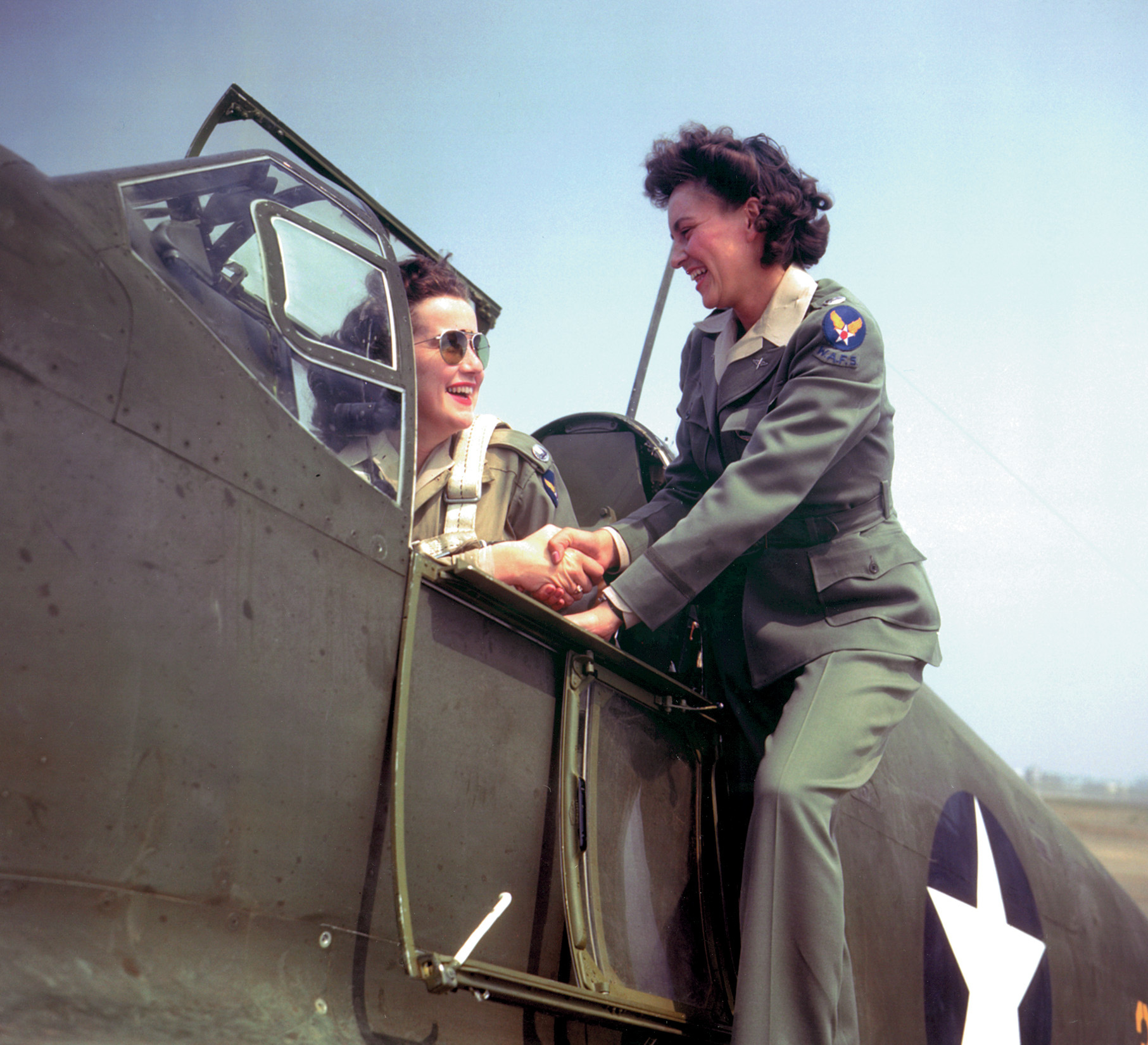
Tapping Into Female Desire To Serve
Jackie knew that there was a large, untapped reservoir of female talent available, experienced fliers like herself and also young women on college campuses who had signed up for a new project sponsored by the government, the Civilian Pilot Training Program. Jackie sent out 3,000 letters asking women if they would be interested in joining a flying corps. The response was overwhelming.
Jackie’s plan to organize a women’s ferrying organization was, however, turned down. General Arnold believed that, in an emergency, female fliers could best serve the country by becoming copilots on domestic airliners, thus freeing male pilots for war duty. America was not yet facing an emergency, so Arnold suggested to Jackie in the summer of 1941 that she recruit American women for the British ATA. She jumped at the idea.
Jackie picked 40 candidates from her files, deliberately keeping the detachment small so as not to deplete the reserve of women fliers in case they were needed later. After interviewing the 40 women in New York, she took them to Montreal, where they were screened by ATA officials. The group was whittled to 25 women, and they headed for England.
Flamboyant Entrance In Mink Coat And Rolls Royce
Regardless of experience, the American women underwent three months of ATA training at the Luton (Bedfordshire) Airfield. All completed the course, and Jackie, who found herself spending more time on administrative work than in cockpits, was given the honorary rank of flight captain. The flamboyant aviatrix raised some eyebrows among the pilots, particularly the British ones, for arriving at the airfield in a chauffeur-driven Rolls Royce and wearing her “second best” mink coat. The British, who had been subjected to months of German bombing raids, were enduring severe food, fuel, and clothing rationing.
Everyone at Luton Airfield agreed that the energetic Jacqueline Cochran, despite her flamboyance, had mustered a contingent of first-rate pilots. All fulfilled their 18-month contracts, and some stayed with the ATA until the war was over. Several of the girls were injured while on duty, and one died. Mary Nicholson was tragically killed when the propeller flew off a single-engine trainer she was ferrying.
The Americans joined their female British counterparts in ferrying all types of aircraft—fighters, bombers, transports, and trainers—around the British Isles. The women displayed skill and fortitude and earned the respect of all who came in contact with them, including many skeptical males.
Women Pilots Prove Their Worth In England
“I ferried for 11 months,” Jackie reported. “We landed planes like the Hurricane and Spitfire in fields where I wouldn’t land my [Lockheed] Lodestar today if I could avoid it. When planes were damaged in flight, the boys often put them down in the first field, and we girls would then take the damaged planes to a depot. When a mission was being organized, ferry pilots would assemble the planes. We would fly perhaps five different types in a day, and after the planes were returned, we would disperse them and put them on satellite fields.
“Then, General Arnold came in June 1942 and said, ‘You’d better come home.’ I recommended strongly that we take on a group of women and train them. The girls proved to be simply remarkable.”
When Jackie returned to her New York apartment that autumn, she picked up a newspaper and was surprised to find that the mobilization of female pilots had already started. The Women’s Auxiliary Ferrying Squadron (WAFS) was being formed as part of the Army Air Forces’ Air Transport Command, and its director was a 27-year-old Vassar graduate and experienced pilot, Nancy Harkness Love. In May 1940, she had proposed recruiting qualified women to supplement the all-male ferrying group then being organized. Nancy Love was interested only in integrating females into the ATC, while Jackie Cochran strove for a separate women pilots’ program led by herself.
Two Female Air Programs Created
After all her campaigning, letter writing, and cajoling, Jackie was angry that Nancy Love’s program had been given precedence. She went to Washington and protested vigorously. Eventually, she won her point, and the War Department and Congress agreed that there should be two programs for women fliers. While Nancy Love’s girls ferried planes for the ATC, Jackie would organize the training of novice pilots for service in the WAFS.
A temporary home for Jackie’s Women’s Flying Training Detachment was found at Howard Hughes Field, the municipal airport in Houston, Tex. A civil aviation school there was chosen to provide training, with Army supervision and discipline. The first trainees were aged between 21 and 35 years, but the minimum limit was later dropped to 18. The girls were required to have had at least 200 hours’ flying time, but this was eventually lowered to 35 hours. Word of the program spread, and Jackie was deluged with more than 25,000 applications. Even Canadian girls applied.
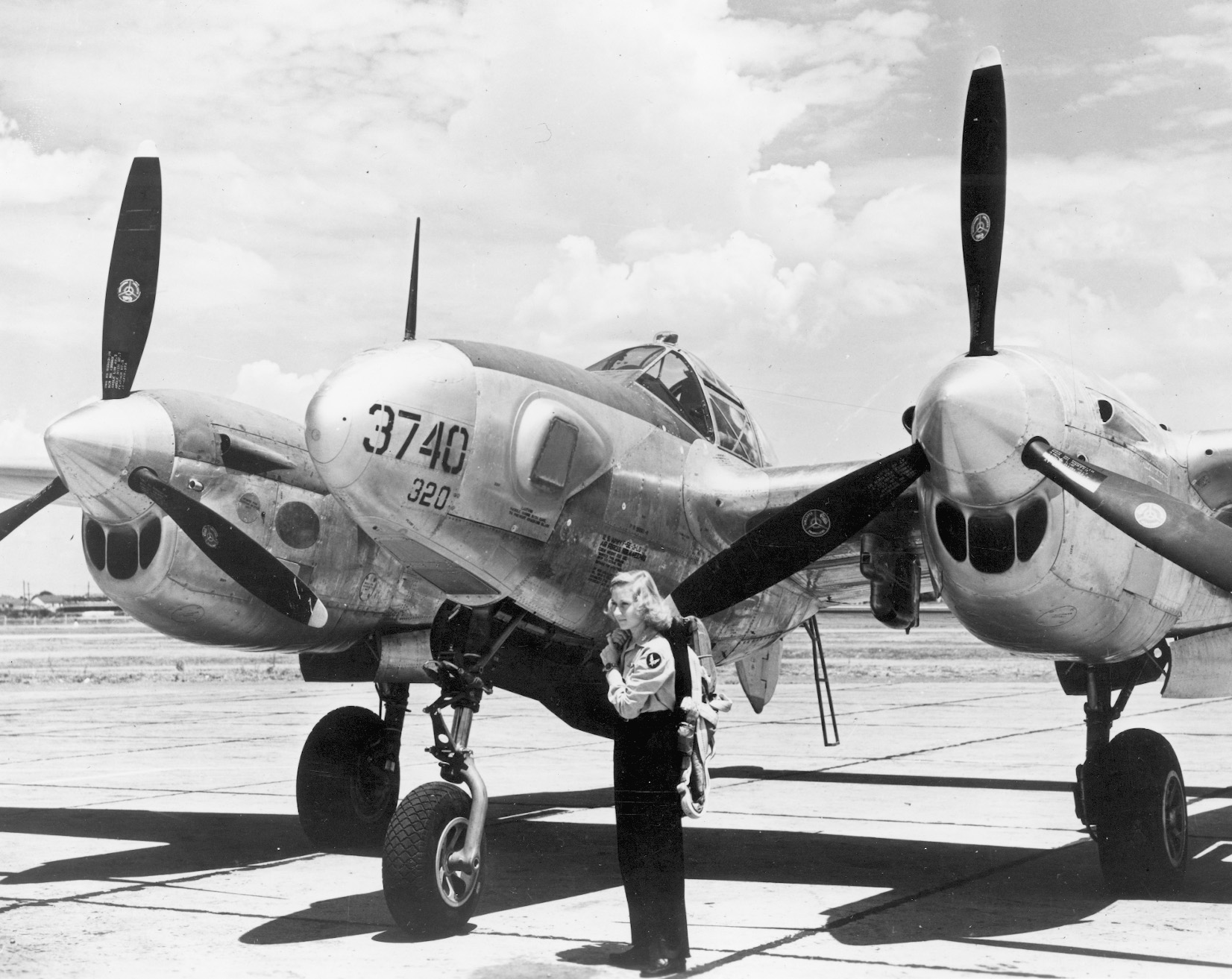
The celebrated aviatrix greeted the first class of 28 women in Houston’s Rice Hotel in November 1942. Wearing her favorite propeller-shaped silver lapel pin with a large diamond for a hub, she told the girls, “If things don’t run smoothly at first, just remember that you will have the honor and distinction of being the first women to be trained by the Army Air Forces. You are very badly needed.”
Full Days Of Study And Training
The women reported for duty at their own expense, were not issued uniforms, and were expected to find their own billets. They were driven every day at dawn to Howard Hughes Field, and their training was divided between flight training and classroom work. They learned everything from engine assembly to navigation to meteorology, and every day in the late afternoon they underwent an hour of physical conditioning. The planes they flew were aging and poorly equipped civil craft. Jackie called them “claptrap equipment.”
By May 1943, Jackie’s detachment had been moved to Avenger Field in Sweetwater, Tex. It was a barren place, 40 miles west of Abilene and set amid dry scrubland. Frequent dust storms rolled across the airfield, and summer temperatures hovered around 100 degrees.
At Avenger Field, the trainees lived in long, wooden barracks, rose at dawn, marched to breakfast, ground school, the flight line, and calisthenics, and went to bed when Taps was sounded. During their 16-hour days, the girls were subjected to Army discipline and regulations. When they could, Jackie’s trainees sunbathed in the hot West Texas sun, not far from their PT-19 and PT-13 Stearman trainers.
”Conchran’s Convent”
Although the women were officially civilians, they had to stand roll call and barracks inspections and march in parades. They were not allowed to leave the base without passes. Jackie approved of the military emphasis because she believed that her recruits could not be turned into an efficient unit unless they were disciplined. Soon, instead of the blue jeans and cut-down men’s trousers the trainees had worn at Houston, they were outfitted by Jackie in trim Santiago blue slacks, Eisenhower jackets, and berets. The color was “invented” by the aviatrix, who loved the blue waters at Santiago, Chile.
Jackie Cochran insisted that her girls conform to a code of conduct, and some wags began to call her detachment “Cochran’s Convent.” Said one trainee, “Jacqueline Cochran had very rigid rules about how we should look and how we should conduct ourselves. But, God love her, it was good discipline.”
Two Flying Groups Merged
Shortly after the move to Avenger Field, Jackie suggested to the Army Air Forces that it would be more efficient all around if her trainees and Nancy Love’s WAFS pilots were brought under one command. The generals agreed, and in the summer of 1943 both groups were merged into a new organization called the Women’s Air Force Service Pilots (WASP). Jackie became the director of women pilots, and Nancy Love was named the WASP executive on the staff of the ATC’s ferrying division.
After training was completed, the WASPs threw themselves enthusiastically into their ferrying duties, flying virtually every type of U.S. plane: Thunderbolts, North American P-51 Mustang fighters, Douglas C-47 transports, Martin B-26 Marauder medium bombers, Boeing B-17 Flying Fortress bombers, and big Boeing B-29 Superfortresses, the most advanced bombers in the world. They ferried new planes from production plants to airfields and between bases all over the country. For fun, the women pilots liked to peel out of the sun and buzz camps, trucks, and chow lines on the ground. Some WASPs ferried as many as 10 airplanes in a day.
One of the initial duties for Jackie Cochran’s girls was towing targets for trainee aerial gunners at Camp Davis, NC. It was hazardous duty hated by male pilots and, though the tow rope was a minimum of 2,500 feet long, some of the female pilots returned to base with bullet holes in the tail sections of their planes. But the women tackled all their jobs with enthusiasm and good spirits.
Girls Show The Men By Flying B-26
“One day, I got a call to come into General Arnold’s office,” Jackie reported. “He said, ‘What do you know about the B-26?’ I said, ‘I don’t know a thing except the scuttlebutt that it’s a so-called hot airplane.’ The men were saying that they were willing to be killed in war, but they wouldn’t fly the B-26. But we were tooled up for them, and we needed them desperately, so we had to build them. They proved to be all right afterward [a challenging plane to handle, the twin-engine Martin Marauder was dubbed the ‘Widow Maker’].”
Said Jackie, “I flew the plane and didn’t see anything so difficult about it. I came back and said to General Arnold, ‘I can cure your men of walking off the program. Let’s put on the girls.’ So, we had 150 girls flying B-26s. They towed targets while live bullets were being shot at the targets from Consolidated B-24 Liberator bombers. They did 70,000 hours of tow work, and with that all-girl crew there was only one minor accident and not a single fatality.”
Jackie’s pilots also did radio-control work. “A girl would fly the airplane and another girl would sit beside her and fly another airplane without anybody in it,” she explained. “She would control the other airplane over the target lines, where men would shoot the plane down. It was an exceedingly difficult operation, and a hazardous one, but we never had a fatality on that, although we did have seven pilots, of whom two were girls, killed by sabotage. The girls also tested new engines, and did some instructing, too. They were marvelous instructors. Men preferred them because they were more patient.”
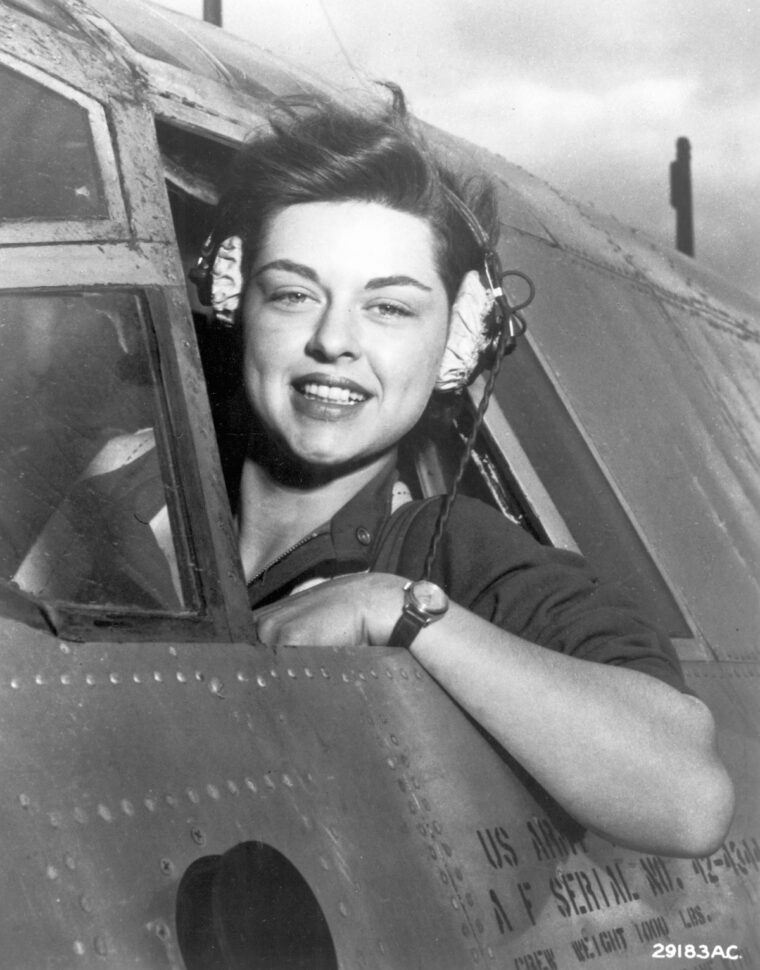
Female Pilots Racked Up Impressive Record
Jackie Cochran’s girls were game for anything, no matter what their personal condition. One day, Jackie observed one of her WASPs, who was obviously pregnant, clamber out of a Mustang. “What are you doing flying a P-51?” Jackie asked. The girl started crying, explaining that her husband was in a combat theater and that she, too, wanted to do her part for the war effort. Jackie told her, “A pregnant woman has no business flying,” but said later, “I couldn’t help but admire her.”
The WASPs compiled a remarkable record. They ferried half of all the high-speed fighter planes in the United States and delivered a total of 12,650 aircraft of 77 types. They logged a total of 60 million air miles for the Army Air Forces. More than 25,000 women applied for WASP training during the war. A total of 1,830 were accepted, and of these, 1,074 graduated.
When combat pilots began returning from overseas to domestic flying duties, the need for female fliers lessened. So, on December 20, 1944, when the WASPs were at their peak of strength and effectiveness, Jackie Cochran’s program was terminated. At the end, 916 women pilots were on duty with the AAF, including 620 in the Training Command and 141 in the ATC.
Long Overdue Militarization Of Women Pilots
Impressed with what Jackie’s girls had accomplished, General Arnold wanted to keep women pilots active in some capacity, but he could not justify doing so unless they were granted military status. A final effort to push a militarization bill through the Senate failed, so Arnold had no choice but to halt the WASP program. It was not until 1977 that Congress belatedly recognized the nation’s debt to the women pilots of World War II and retroactively militarized them, making them eligible for veterans’ benefits.
When the WASPs were disbanded, Jacqueline Cochran did not stay idle for long. She tried a new pursuit, journalism, and asked the editor of Liberty magazine to send her to the Pacific theater as a correspondent. She interviewed Madame Chiang Kai-shek of China and reported the Japanese surrender aboard the battleship USS Missouri on September 2, 1945. She later covered the Nuremberg war crimes tribunals in 1946, interviewed the Shah of Iran and President Francisco Franco of Spain, met Chinese Communist leader Mao Tse-tung, and toured Russia.
A Career In Politics
Jackie was commissioned a lieutenant colonel in the Air Force Reserve in 1948 and later held the same rank in the Civil Air Patrol. She was an early supporter of General Dwight D. Eisenhower as a presidential candidate and was instrumental in his decision to run as the Republican contender. While he was serving as the supreme Allied commander in Europe in 1952, she flew to Paris to show him newsreel film of an “Ike for President” rally in New York. She believed that the enthusiasm shown at the rally convinced him to run.
Jackie herself entered politics, running against Democrat Dalip S. Saund for the 29th District congressional seat in California in 1956. She was defeated by only 3,000 votes.
Jackie was a director of Northeast Airlines and the Air Force Academy Foundation, chaired the National Aeronautic Association, served two terms as president of the Federation Aeronautique Internationale, and helped a number of needy children get an education.
A Journey From Sawdust To Stardust
She entered the jet age with the same fervor with which she had raced in the 1930s. Piloting a Sabrejet in 1953, she set world jet speed records for both men and women—100 kilometers at 652.552 mph; 500 kilometers at 590.321 mph and 15 kilometers at 675.471 mph. Flying a Northrop T-38 in 1961, she broke her own 100- and 500-kilometer records and set an altitude record of 55,253 feet.
On June 6, 1960, Jackie piloted an A3J jet at twice the speed of sound, the first woman to do so. Nine days later, she scored another first for women by making an arrested landing in a jet fighter aboard a carrier, the USS Independence. She was also catapulted from the flattop.
Jackie flew the 5,120 miles from New Orleans to Hannover, Germany, on April 27, 1962, becoming the first woman to pilot a jet plane across the Atlantic. Flying a Lockheed F-104G Starfighter in April-May 1963, she set two more records. She covered 10 miles on a 125-kilometer course at 1,273.10 mph and covered a 100-kilometer course at 1,203.94 mph. The following year, Jackie set a standing women’s world speed record by traveling at 1,429 mph in an F-104G.
For her achievements in aviation, she collected numerous honorary doctorates and awards, and the honorary wings of the French, Spanish, Turkish, Chinese, and Thai air forces. For her tireless leadership in World War II, Jacqueline Cochran received the Distinguished Service Medal.
The courageous aviatrix who, in her own words, had journeyed “from sawdust to stardust,” died at her 500-acre ranch near Indio, Calif., on August 9, 1980.
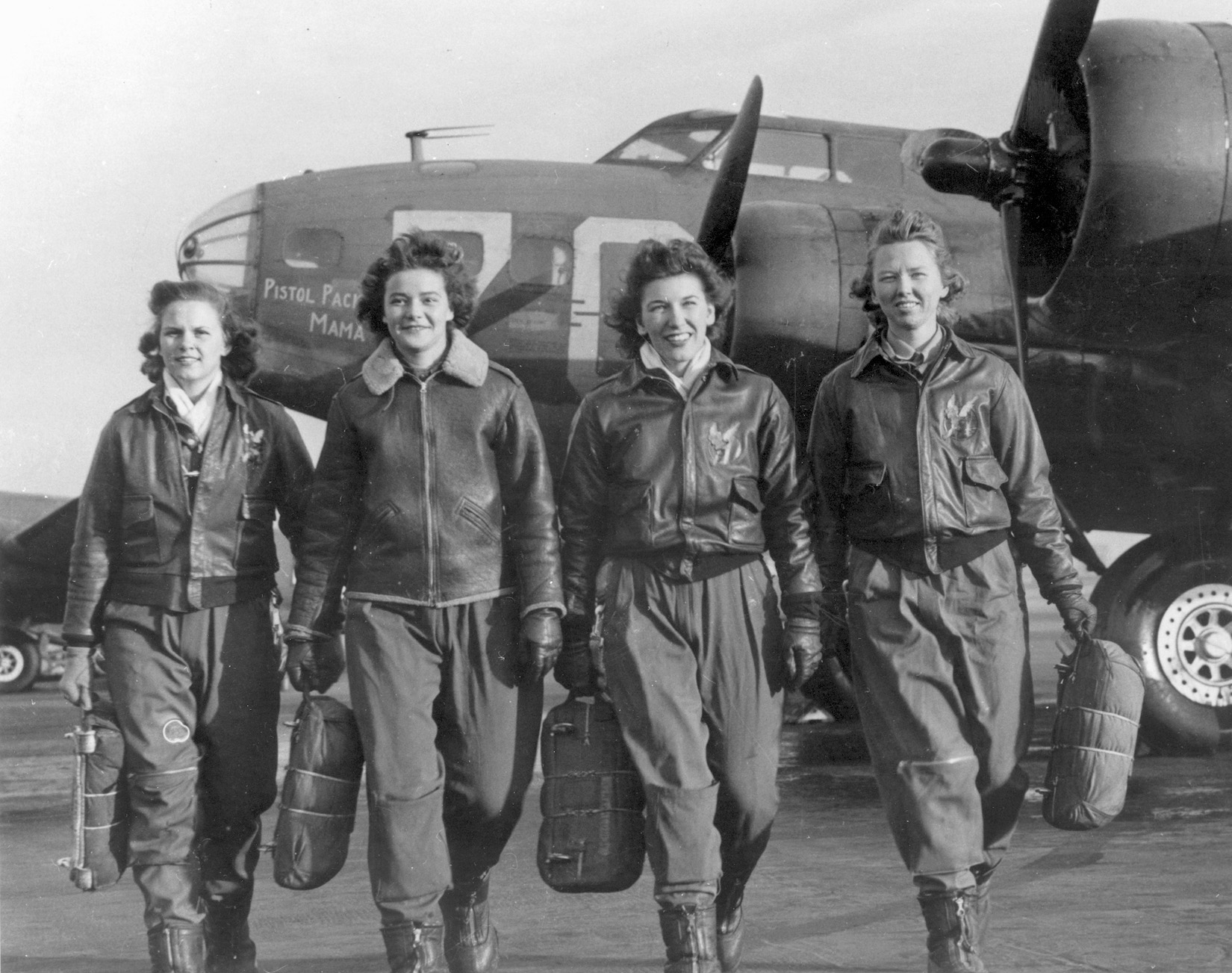
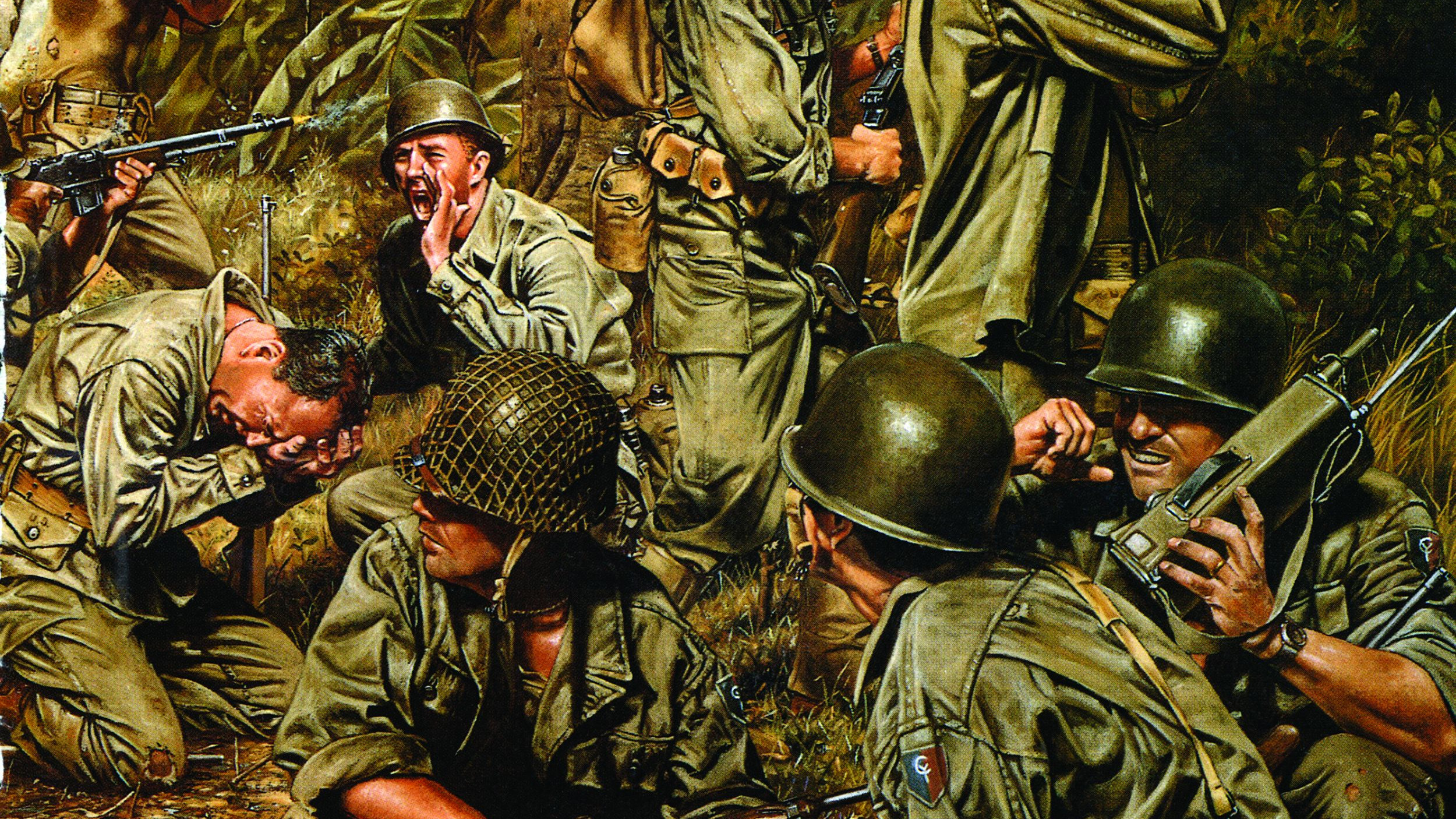
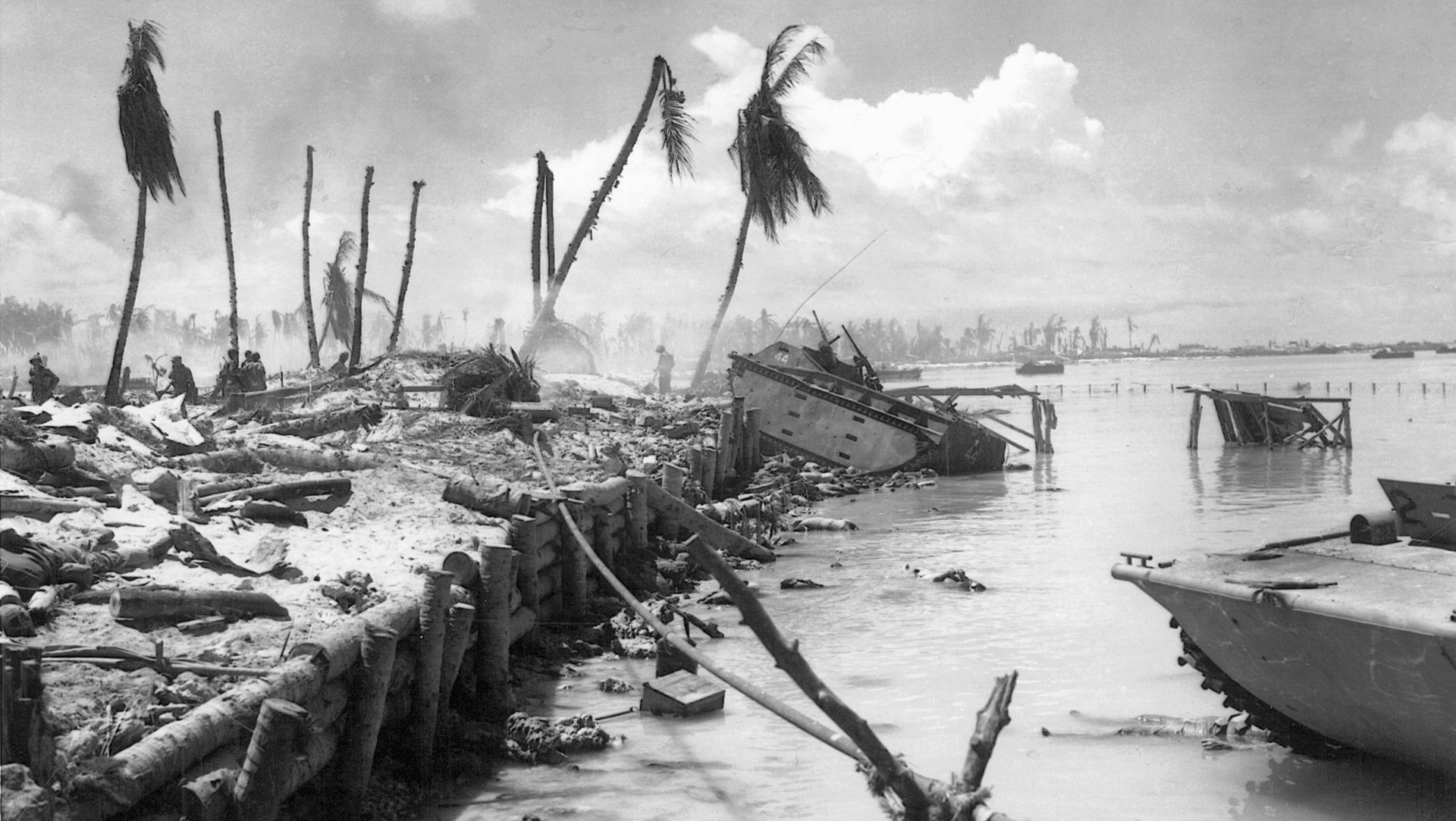
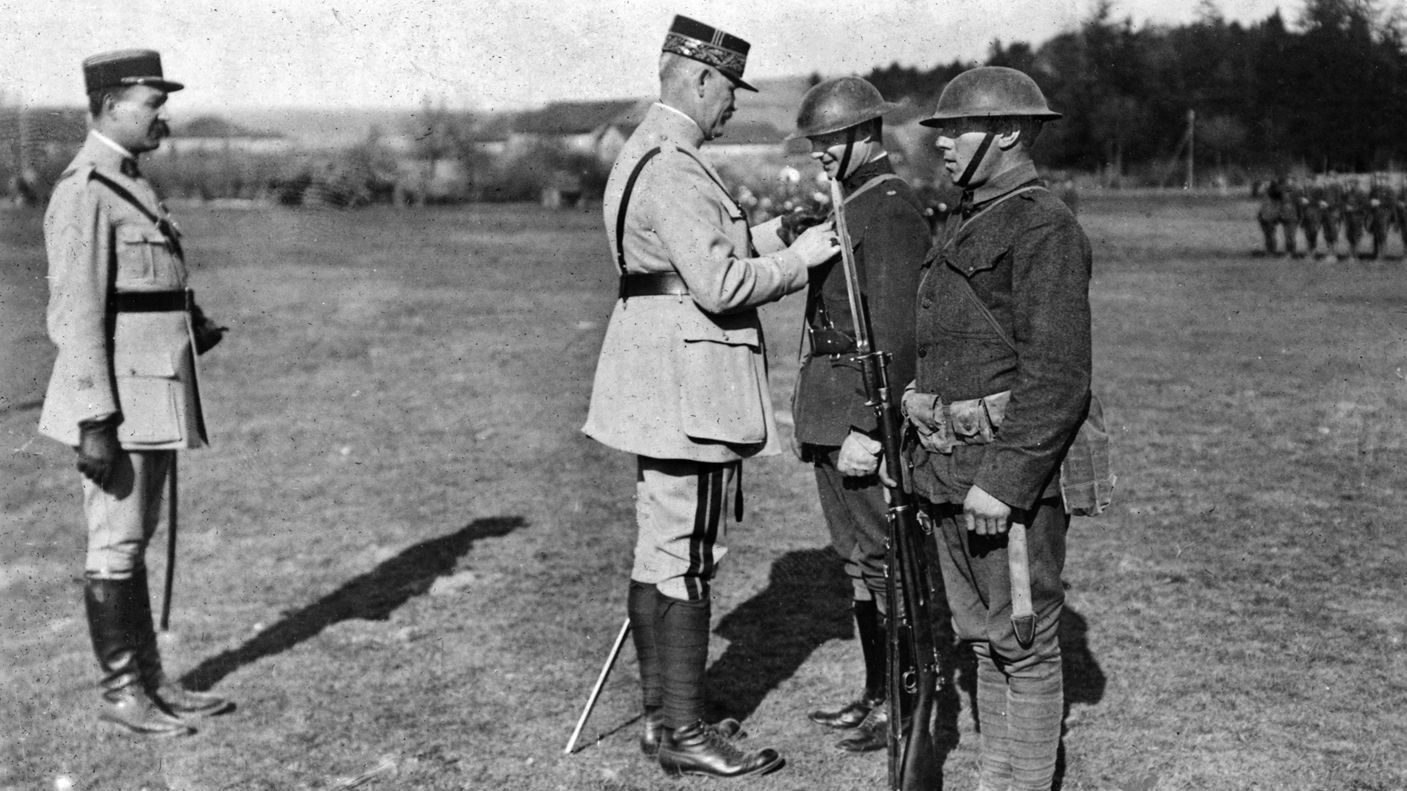
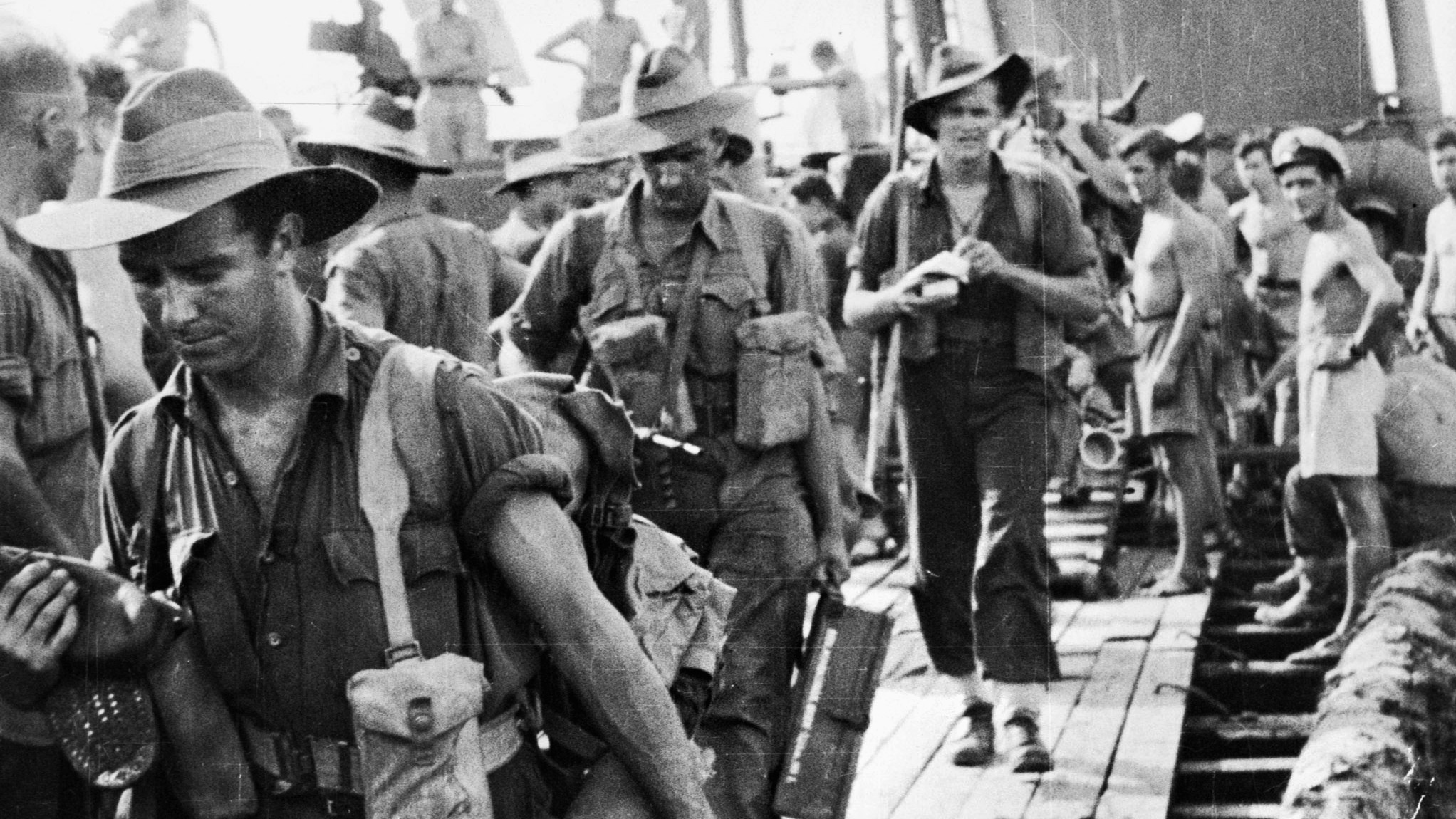
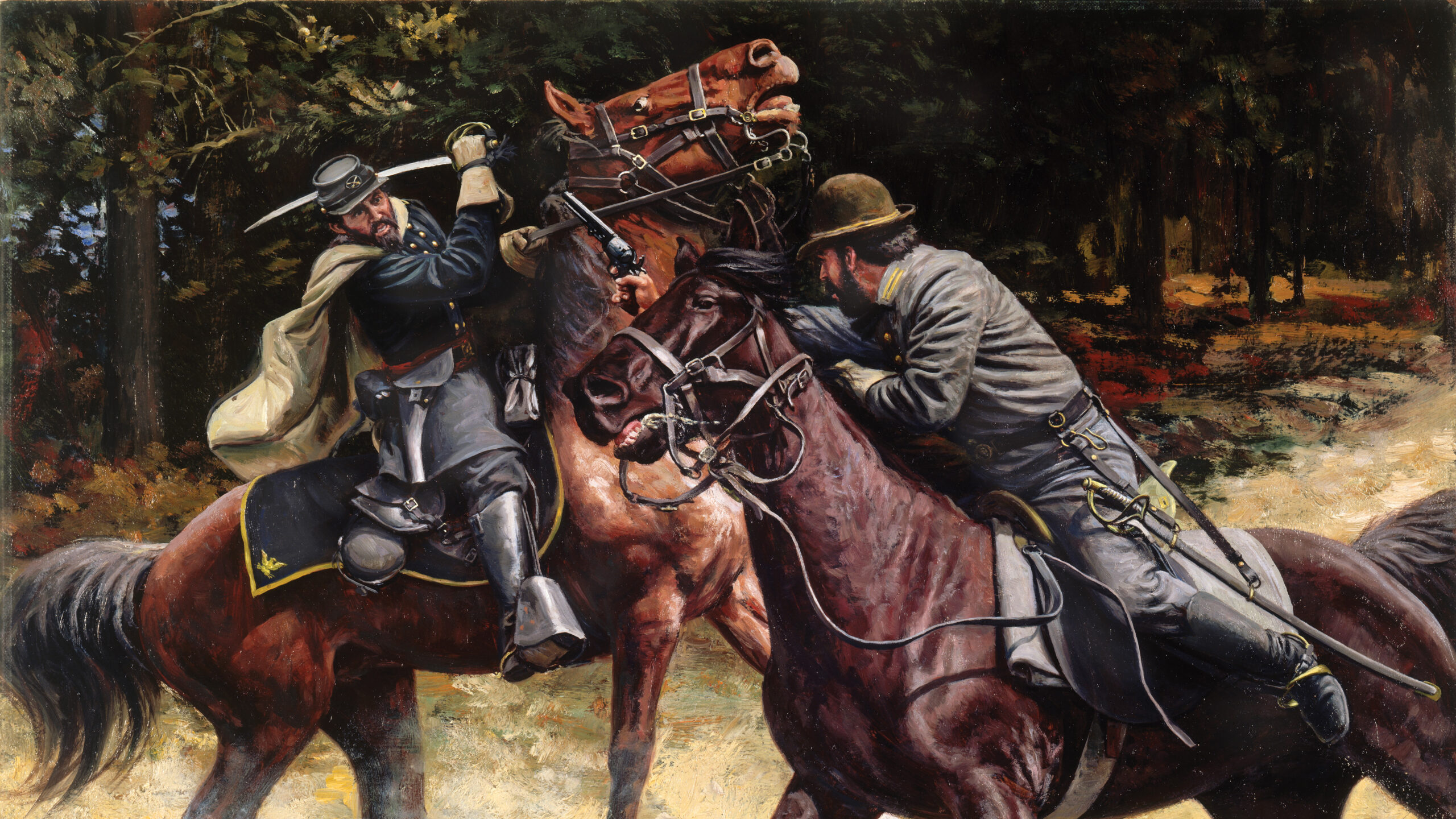
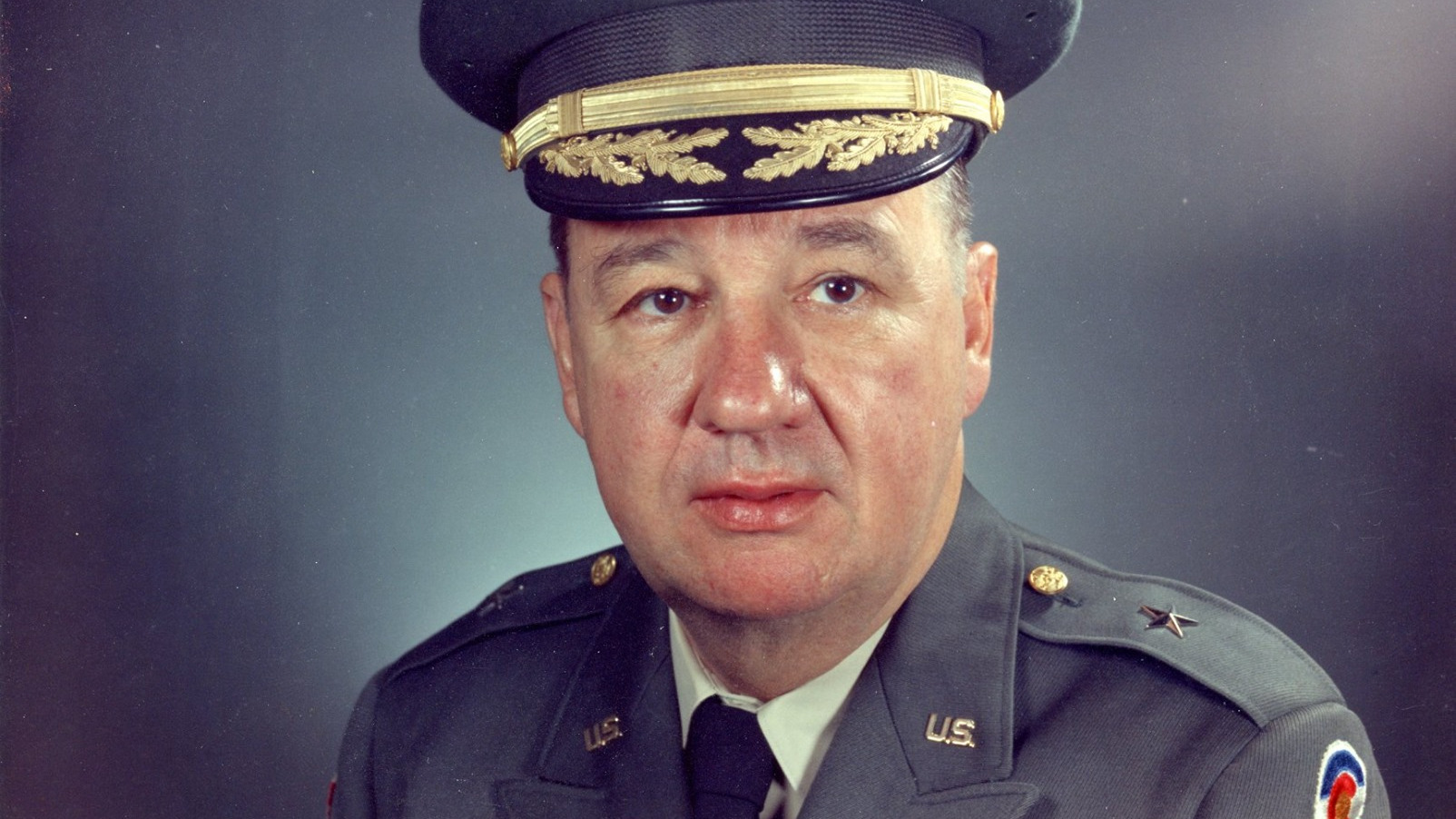
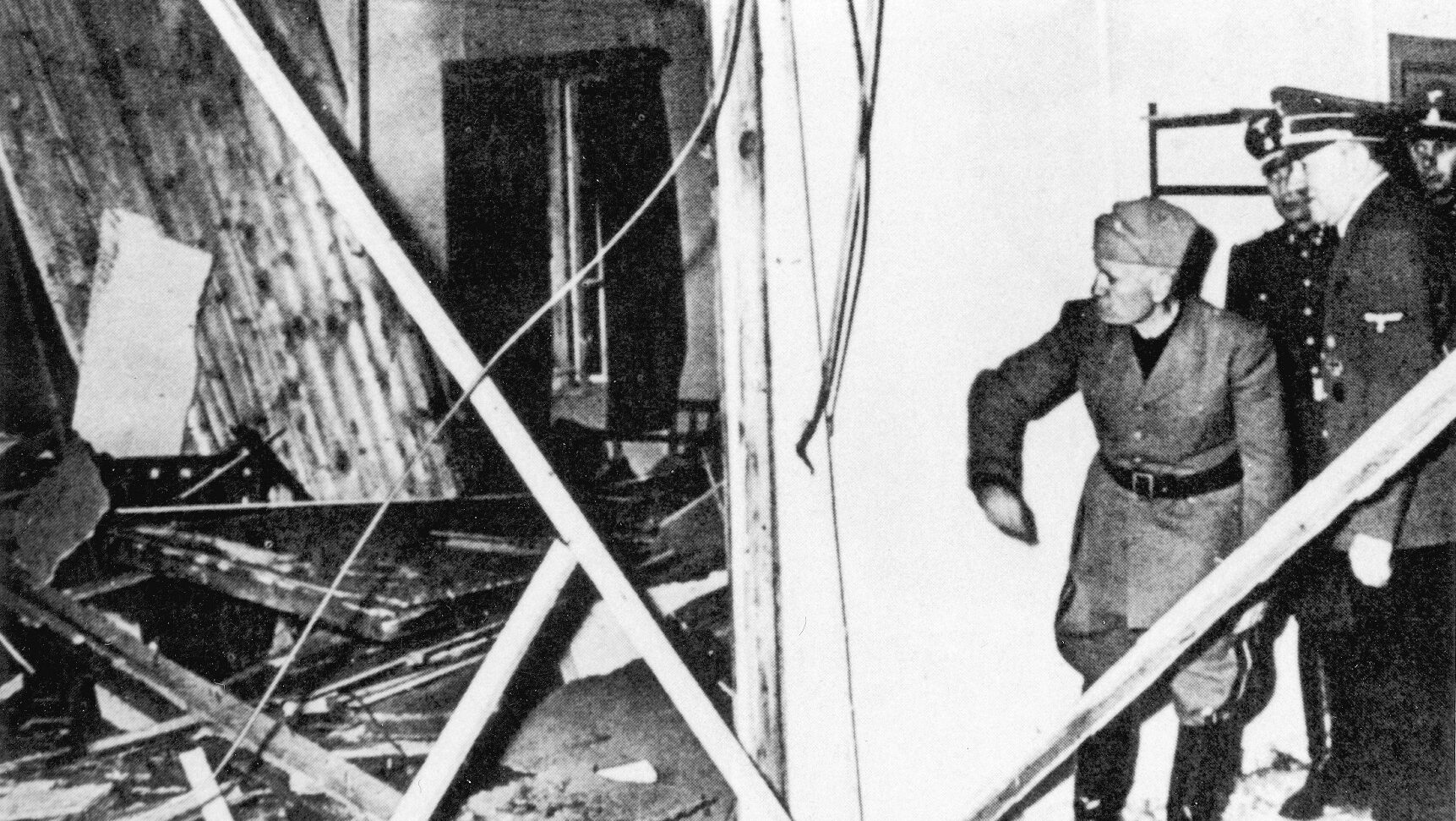
Join The Conversation
Comments
View All Comments